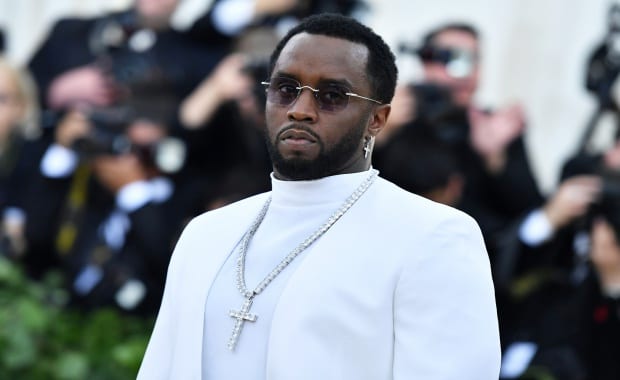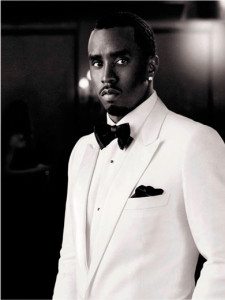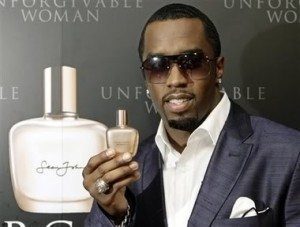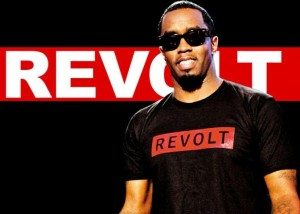Entrepreneurs
Why Sean ‘Diddy’ Combs Is So Successful

Sean John Combs, also known as Diddy, P. Diddy and Puff Daddy is the founder and CEO of Bad Boy Worldwide Entertainment Group. The company is a business powerhouse with several streams of income.
Diddy oversees an empire that includes music recording and production, TV, Film, alcoholic beverages, apparel, restaurants and more.
Diddy’s Early Life:
 Diddy was born in Harlem and raised in Mount Vernon New York. He first got into the music industry at Uptown records as an intern where he went on to become talent director after dropping out of Howard University. He went on to sign and produce Mary J. Blige.
Diddy was born in Harlem and raised in Mount Vernon New York. He first got into the music industry at Uptown records as an intern where he went on to become talent director after dropping out of Howard University. He went on to sign and produce Mary J. Blige.
In 1994, Diddy founded Bad Boy Records and signed just 2 artists at the time. They were Craig Mack and close friend Notorious B.I.G. The label went on to achieve huge success with these two original artists as well as; Mase, Lil’ Kim, Faith Evans and others.
The Growth of a Music Empire:
 Two years later in 1996, Diddy embarked on an incredible 50/50 joint venture with Clive Davis and Arista Records which would allow Bad Boy Records to market their artists to a global marketplace. After an amazing run of success and consistent business growth, Bad Boy Entertainment ended their joint venture on good terms in 2002. Part of deal was for Diddy to retain full control of Bad Boy Records, the artists and the entire back catalogue.
Two years later in 1996, Diddy embarked on an incredible 50/50 joint venture with Clive Davis and Arista Records which would allow Bad Boy Records to market their artists to a global marketplace. After an amazing run of success and consistent business growth, Bad Boy Entertainment ended their joint venture on good terms in 2002. Part of deal was for Diddy to retain full control of Bad Boy Records, the artists and the entire back catalogue.
In the early part of 2003, Diddy and Bad Boy Records announced that they had signed a global distribution deal with Universal Records. The terms of the deal dictated that Universal would provide promotional and marketing services for Bad Boy’s artists and distribute new releases as well as the back catalogue. Crucially, Diddy retained 100% ownership of Bad Boy Records.
Diddy’s estimated net worth is $825 Million.
Clothing Line:
 In 1998 Diddy founded Christian Casey LLC, named after his second son. The company designs, produces and distributes urban fashion clothes and accessories for males and females. Christian Casey operates as Sean John Clothing and owned by Bad Boy Entertainment. The Sean John fashion label has been extremely successful with yearly sales in excess of $100 Million. In 2004, the brand was awarded the ‘Men’s designer of the year award by the Council of Fashion Designers of America. Diddy’s Sean John Enterprise also purchased the Enyce clothing line from Liz Claiborne for $20 million in the latter part of 2008.
In 1998 Diddy founded Christian Casey LLC, named after his second son. The company designs, produces and distributes urban fashion clothes and accessories for males and females. Christian Casey operates as Sean John Clothing and owned by Bad Boy Entertainment. The Sean John fashion label has been extremely successful with yearly sales in excess of $100 Million. In 2004, the brand was awarded the ‘Men’s designer of the year award by the Council of Fashion Designers of America. Diddy’s Sean John Enterprise also purchased the Enyce clothing line from Liz Claiborne for $20 million in the latter part of 2008.
Fragrances:
 In a joint venture with Estee Lauder, 2005 saw the birth of Sean John Fragrances. Diddy’s flagship fragrance, Unforgivable, reached Number one in department stores in the USA in a very short space of time. Sean John Fragrances have since expanded to incorporate; Unforgivable Woman and I Am King, which are being sold all over the globe. Unforgivable became the first male fragrance to to claim the title of ‘Best Selling Fragrance’ in 2006 according to a leading retail and consumer information provider. Diddy has twice won ‘Fragrance of the Year’ at Annual FiFi Awards hosted by The Fragrance Foundation, once for Unforgivable and once for I am King.
In a joint venture with Estee Lauder, 2005 saw the birth of Sean John Fragrances. Diddy’s flagship fragrance, Unforgivable, reached Number one in department stores in the USA in a very short space of time. Sean John Fragrances have since expanded to incorporate; Unforgivable Woman and I Am King, which are being sold all over the globe. Unforgivable became the first male fragrance to to claim the title of ‘Best Selling Fragrance’ in 2006 according to a leading retail and consumer information provider. Diddy has twice won ‘Fragrance of the Year’ at Annual FiFi Awards hosted by The Fragrance Foundation, once for Unforgivable and once for I am King.
“If you dream and you believe, you can do it” – Diddy
Alcoholic Beverages:
 In an incredible and lucrative move, Diddy entered into a partnership with Diageo to create and manage all marketing processes for Diddy’s brainchild, Ciroc Vodka. The deal dictated that Diddy and Sean Combs Enterprises make all brand related decisions and share future profits and growth with Diageo. This unique collaboration for a USA based spirits company, is set to last several years and will be worth an estimated $100 Million for Diddy.
In an incredible and lucrative move, Diddy entered into a partnership with Diageo to create and manage all marketing processes for Diddy’s brainchild, Ciroc Vodka. The deal dictated that Diddy and Sean Combs Enterprises make all brand related decisions and share future profits and growth with Diageo. This unique collaboration for a USA based spirits company, is set to last several years and will be worth an estimated $100 Million for Diddy.
In the early part of last year, Diddy ignited another partnership with Diageo in order to kick-start a joint venture to purchase DeLeon, a luxury Tequila brand. DeLeon is currently selling for $1000 per in Los Angeles bars. It is currently selling around 10,000 cases per year in only 18 states so Diddy’s famous ability for business growth is destined to take effect for the brand.
“You have to be somewhat crazy, if you want to be successful.” – Diddy
Revolt TV:
 In 2013, Diddy was backed by Comcast to launch Revolt TV, a music cable network that is believed to be owned solely by Mr. Combs. In the Spring of last year, Diddy was believed to have bid $200 Million to buy Fuse TV to gain a wider distribution and higher subscriber fees. Although this bid was unsuccessful, it was a clear show of Diddy’s intention to grow the channel and we can expect much more of that in the future.
In 2013, Diddy was backed by Comcast to launch Revolt TV, a music cable network that is believed to be owned solely by Mr. Combs. In the Spring of last year, Diddy was believed to have bid $200 Million to buy Fuse TV to gain a wider distribution and higher subscriber fees. Although this bid was unsuccessful, it was a clear show of Diddy’s intention to grow the channel and we can expect much more of that in the future.
Conclusion:
Diddy is an incredible example of how a persistent, obsession like approach to business growth can create amazing results. It is important to realize that Diddy is one of those ‘self-made’ people that can inspire to believe and take action on our dreams in order to make them a reality.
Diddy’s Success:
Change Your Mindset
The Silent Skill That Makes People Respect You Instantly
What truly earns respect and why most people go about it the wrong way

Everybody craves respect but not everyone earns it. Some people believe that a title, years of experience, or a position of authority automatically entitles them to respect. (more…)
Entrepreneurs
The Essential Skills Every Entrepreneur Needs In 2026
Success in the digital age isn’t about luck. It’s about mastering the skills that separate dreamers from doers.

When I was 22 years old, I started my first side hustle as a ghostwriter. (more…)
Business
The Hidden Money Pit in Your Operations (and How to Use It)
See how smart asset management software is quietly saving businesses thousands in wasted time, stock, and maintenance.

Trimming unnecessary expenses and minimizing resources is a general practice in running a business effectively. Asset management software can help you achieve those goals. (more…)
Business
Thinking of Buying A Business? These 6 Sectors Quietly Produce the Best Deals
Before you buy your next venture, check out the sectors where successful businesses are changing hands every day.

All entrepreneurs have a desire to be the masters behind a successful venture. Buying an established business is a great choice for many. This provides instant access to an established market with existing infrastructure and clients. (more…)
-

 Success Advice4 weeks ago
Success Advice4 weeks agoInside the TikTok Resume Hack That’s Fooling Recruiters (For Now)
-

 Change Your Mindset4 weeks ago
Change Your Mindset4 weeks agoThe One Leadership Habit That Separates the Great From the Forgettable
-

 Personal Development3 weeks ago
Personal Development3 weeks agoThis Silent Habit Might Be Sabotaging Your Career
-

 Business3 weeks ago
Business3 weeks agoWhy Your E-Commerce Fulfilment Is Probably Broken (And How to Fix It)
-

 Shift Your Mindset2 weeks ago
Shift Your Mindset2 weeks ago11 E’s That Define Every Great Leader And Why Most People Miss Them
-

 Did You Know2 weeks ago
Did You Know2 weeks agoThe Success Patterns You Inherited (And Didn’t Notice)
-

 Business2 weeks ago
Business2 weeks agoThe Hidden Money Pit in Your Operations (and How to Use It)
-

 Entrepreneurs1 week ago
Entrepreneurs1 week agoThe Essential Skills Every Entrepreneur Needs In 2026

























4 Comments